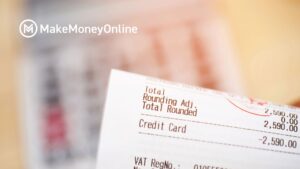The Rise of Product Testing as a Work-From-Home Career
The gig economy has unlocked numerous opportunities for people looking to work from home, and paid product testing is quickly emerging as a popular choice. With companies constantly developing new products, they need real users to provide feedback before mass production. That’s where home product testers come in—testing items and offering insights that help businesses refine their products. The best part? No experience is required, making this a perfect side hustle or even a full-time career for those who enjoy evaluating everyday products.
Why consider product testing as a remote job?
- Earn between $25 and $45 per hour (Australian Consumer Panels, Online Consumer Panels America)
- Flexible work-from-home schedule
- Get access to free products like kitchen appliances, makeup, tech gadgets, and more
- No prior experience necessary
In this comprehensive guide, we’ll walk you through everything you need to know about getting paid to test products from home. From discovering legitimate product testing sites and understanding how the process works to learning expert strategies for maximizing your earnings, this guide covers all the essential details to help you succeed as a home-based product tester.
What is a home product tester?
Understanding the Role of a Product Tester
Product testers help brands improve their offerings by providing detailed feedback on their experience using new or prototype products. These insights influence everything from design tweaks to marketing strategies.
Types of product testing include:
- Physical product testing: Companies send products (e.g., kitchen tools, skincare, electronics) to your home to test.
- Digital UX testing: Evaluate websites, apps, or software for usability.
- Survey-based testing: Share opinions on product concepts via online surveys.
How are testers compensated?
- Cash payments per test (e.g., UserTesting, Toluna)
- Gift cards or product retention (Swagbucks, Product Report Card)
- Premium rates for specialized testers (e.g., medical equipment, high-end gadgets)
Many companies and market research firms recruit testers through dedicated platforms. Signing up on multiple sites increases your chances of consistent testing opportunities.
How to Apply for Product Testing Jobs & Get Selected
Now that you know where to find product testing jobs, it’s time to apply and increase your chances of selection. Follow these steps to stand out:
Step 1: Build a Strong Tester Profile
A well-crafted profile is the key to getting selected for product testing opportunities. Companies look for testers who match their target demographic, so providing accurate information about your age, location, household size, and lifestyle habits is crucial. Listing your hobbies and consumer preferences helps testing platforms match you with relevant products—for example, someone who frequently cooks is more likely to be selected for kitchen gadget tests. Additionally, if you have prior experience testing products or reviewing items online, be sure to mention it, as this can give you an edge when applying for high-paying opportunities such as electronics or UX testing roles.
Step 2: Apply to Multiple Platforms
Relying on a single platform significantly limits your chances of securing frequent testing gigs. To increase your opportunities, sign up for at least three to five legitimate product testing websites. Each company has different clients and product categories, meaning you’ll get access to a wider variety of tests. Many platforms have screening processes, where they evaluate your profile before offering assignments—so the more sites you apply to, the higher your chances of being selected. Keep in mind that some companies require testers to reapply periodically, so staying active and engaged can improve your eligibility for future tests.
Step 3: Check Emails & Apply Quickly
Most product testing slots fill up fast, as companies often have a limited number of testers per product. To maximize your chances of being selected, check your email frequently, including your spam folder, for test invitations. Many companies require applicants to fill out a short questionnaire to confirm eligibility, and responding promptly can determine whether you get selected or miss out. Some high-demand tests operate on a first-come, first-served basis, so being proactive and applying as soon as possible is essential. Consider setting up email alerts or a dedicated inbox for product testing invitations to ensure you never miss an opportunity.
Step 4: Follow Instructions Carefully
Each product test comes with specific guidelines, and failure to follow them precisely can result in disqualification from future opportunities. Read all instructions thoroughly before using the product, as companies often want testers to evaluate particular features or aspects of performance. If you’re testing digital products, you may be required to record your screen or provide written feedback in a structured format. Missing even a small detail—like failing to test a product for the required time—can lead to low ratings from testing platforms, making it harder to get selected for high-paying tests in the future.
Step 5: Provide High-Quality Feedback
Companies don’t just want opinions—they want insightful, actionable feedback that helps improve their products. Instead of generic responses like “The product was great,” describe why it worked well, how it compared to similar products, and what could be improved. Be as specific and detailed as possible—for example, if testing a new kitchen gadget, discuss how easy it was to use, how well it performed specific tasks, and whether you’d purchase it yourself. Brands favor testers who provide valuable insights, meaning high-quality feedback can lead to repeat opportunities and access to exclusive, better-paying tests.
Where to Find Legitimate Product Testing Jobs
Not all product testing opportunities are genuine. Some platforms require paid memberships, while others may be outright scams. To help you navigate this, here are some of the best legitimate platforms for paid product testing:
1. UserTesting
Best for: Digital product testing (websites, apps, and software)
Earnings: $10-$60 per test (varies by complexity)
Test Duration: 15-60 minutes
UserTesting is a premier platform for evaluating user experience (UX) on websites and mobile applications. Testers are required to complete assigned tasks while sharing their thoughts aloud, providing valuable insights into usability, design, and functionality.
- Payment Structure: Compensation depends on test complexity, with live interviews offering higher payouts.
- Testing Process: Testers must record their screen and voice while navigating a website or app. A strong command of English and clear articulation improve selection chances.
- Additional Perks: Companies seek testers with diverse demographics, so individuals with specific backgrounds (e.g., tech-savvy users, business professionals) may receive more opportunities.
Pro Tip: For a higher selection rate, complete your profile with details on your devices, internet speed, and software expertise to match more test criteria.
2. Toluna
Best for: A mix of physical product testing and online surveys
Earnings: Rewards via cash, gift cards, or product retention
Toluna is a market research platform where users participate in surveys and physical product testing. Unlike platforms focused solely on digital products, Toluna testers receive real-world items to evaluate.
- Product Categories: Kitchen appliances, beauty products, household items, and personal care essentials.
- Compensation: Users earn points for completing surveys and tests, redeemable for cash, gift cards, or exclusive products.
- Selection Process: The platform frequently recruits specific demographics, so updating personal information increases testing invitations.
Pro Tip: Since many product tests are limited, apply as soon as invitations are sent to maximize participation.
3. Swagbucks
Best for: Survey-based earning with occasional product testing gigs
Earnings: Rewards in Swagbucks (SB), convertible to cash or gift cards
Swagbucks is well known for paid surveys, but it also offers limited product testing opportunities where testers receive free items in exchange for feedback.
- Testing Opportunities: While not as frequent as dedicated testing platforms, users may qualify for Amazon product trials, beauty items, and tech accessories.
- Additional Earning Methods: Completing surveys, watching ads, or using cashback deals provides extra earnings, making Swagbucks a versatile platform.
- Payment Structure: SB points can be converted into PayPal cash, Amazon gift cards, or retailer-specific vouchers.
Pro Tip: To increase your chances of landing product testing gigs, maintain an active profile and engage regularly in surveys and daily activities.
4. Australian Consumer Panels
Best for: High-paying, home-based physical product testing
Earnings: $25-$45 per hour
Australian Consumer Panels focuses on in-home product evaluations, making it one of the highest-paying product testing platforms. Testers receive consumer goods and provide detailed feedback on functionality, usability, and packaging.
- Testing Categories: Household appliances, personal care items, beauty products, and kitchen gadgets.
- Screening Process: The platform has a multi-stage selection process, requiring users to match consumer profiles set by brands.
- Compensation Model: Unlike points-based systems, testers receive direct cash payments per assignment.
Pro Tip: Because this platform is highly competitive, respond quickly to screening invitations and complete your profile with detailed demographic information.
5. Product Report Card
Best for: Physical product testing with full-sized product retention
Earnings: Cash, gift cards, or keeping tested products
Product Report Card offers real-world product testing opportunities, allowing users to receive and keep full-sized products in exchange for detailed reviews.
- Common Products: Kitchenware, electronics, cosmetics, fitness equipment, and baby products.
- Testing Process: After using the product, testers provide detailed written feedback, often including photos or videos.
- Compensation Options: Payments may come in the form of cash, free products, or points redeemable for rewards.
Pro Tip: Testers with strong writing skills and attention to detail are more likely to be selected for premium product trials.
Skills Needed to Succeed as a Product Tester
While most product testing jobs don’t require prior experience, successful testers share certain skills that help them stand out:
1. Attention to Detail
- Brands want specific feedback—vague responses won’t cut it!
- Pay attention to aspects like usability, performance, packaging, and instructions.
2. Strong Written Communication
- Many companies require written feedback, surveys, or reviews.
- Having good grammar, punctuation, and structure improves the quality of your reports.
3. Time Management & Consistency
- Most testing opportunities have deadlines, and failing to submit feedback on time can hurt future opportunities.
- Stay organized by tracking test deadlines and keeping thorough notes during the testing period.
Pro Tip: Treat product testing like a freelance gig—the more reliable and detailed you are, the more tests you’ll qualify for!
Maximizing Income & Building a Career in Product Testing
Diversify Your Testing Platforms
- Sign up for multiple platforms to ensure a steady flow of testing opportunities.
- Prioritize platforms that offer cash compensation rather than just rewards or gift cards.
Focus on High-Paying Tests
- Specialized tests (e.g., medical devices, high-tech gadgets) offer better payouts.
- Read test descriptions carefully—some require longer testing periods but pay significantly more.
Establish Yourself as a Reliable Tester
- Consistently provide high-quality feedback to increase your chances of repeat invitations.
- Many companies prioritize testers who have a history of delivering valuable insights.
Turn Product Testing Into a Career
- Advanced testers specialize in niche markets (e.g., UX testing, consumer electronics).
- Some testers transition into paid consulting roles for product development teams.
Pro Tip: Keep track of earnings, payments, and completed tests to optimize your workflow and income strategy.
Conclusion
Product testing from home is a legitimate and flexible way to earn income while actively shaping the future of consumer products. By participating in testing programs, individuals gain early access to new products, provide valuable feedback, and help companies improve their offerings before launch. This gig is not only an exciting opportunity for those who love trying out new items, but it also serves as a reliable income source for those willing to invest time and effort.
To maximize earnings, product testers should sign up on multiple platforms, stay consistent with applications, and focus on high-paying opportunities such as UX testing and specialized product trials. Providing detailed and constructive feedback enhances credibility, leading to more frequent testing invitations and higher compensation opportunities.
Additionally, this field offers long-term potential, allowing dedicated testers to transition from side hustlers to professional product evaluators. Many brands and market research companies actively seek reliable testers who can contribute insightful reviews and usability assessments. Some testers even move into roles related to market research, product consulting, or content creation for brands.
If you’re looking for a fun, rewarding, and flexible way to earn money from home, now is the perfect time to start. Begin applying today, and take advantage of the perks—from earning cash to receiving free products—while making an impact on the latest innovations before they hit the market!











Comments